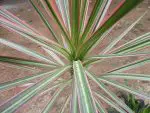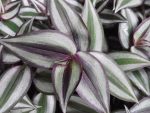This post contains affiliate links. If you buy something from one of our links we may earn a commission. Thanks
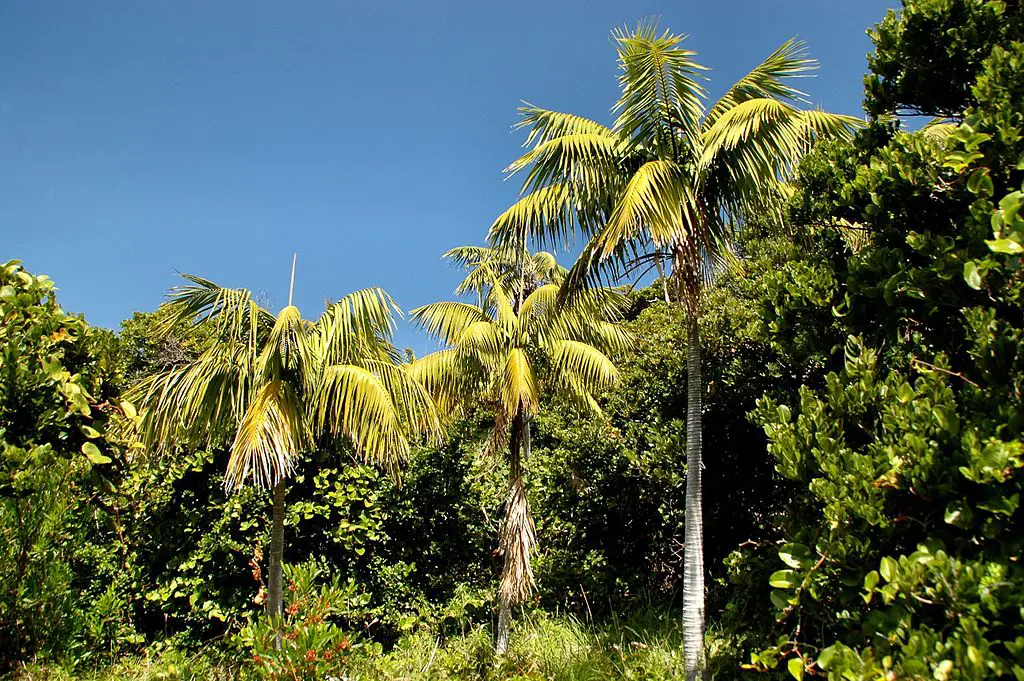
Discover the key to successful Kentia Palm indoor care with our comprehensive guide. From watering to fertilizing, we’ve got you covered.
Kentia Palm indoor care involves placing it in bright, indirect light, maintaining a temperature between 60 to 80°F, and watering when the top few inches of soil are dry. It thrives in humid conditions, prefers well-draining soil, and benefits from balanced fertilizer during the growing season. Regular inspection for pests and occasional repotting contribute to a healthy Kentia Palm.
Keep your plant thriving today!
Are you looking to add a touch of the tropics to your indoor space? Look no further than the Kentia Palm.
However, to keep your Kentia Palm looking its best, it’s important to understand the ins and outs of Kentia Palm indoor care.
From light and water requirements to repotting and propagation, we’ve got you covered.
Keep reading to learn everything you need to know to keep your Kentia Palm thriving.
You can buy a Kentia Palm on Amazon here
I. Introduction To The Kentia Palm
The Kentia Palm is a stunning indoor plant that has become increasingly popular in recent years.
Known for its elegant fronds and low-maintenance nature, this popular indoor plant is the perfect addition to any home or office.
Beyond its aesthetic appeal, the Kentia Palm also offers several benefits that make it a great addition to any indoor space.
Studies have shown that indoor plants, like the Kentia Palm, can help purify the air by removing harmful pollutants and toxins, creating a healthier living environment.
Additionally, the presence of plants in the home has been linked to improved mood, reduced stress levels, and increased productivity.
With these benefits in mind, it’s easy to see why the Kentia Palm has become such a popular choice for indoor plant enthusiasts.
However, like any plant, the Kentia Palm requires proper care to ensure it thrives in its indoor environment.
In this guide, we’ll walk you through everything you need to know about Kentia Palm indoor care.
Whether you’re a seasoned plant enthusiast or new to indoor gardening, we’ll cover all the basics to help you keep your Kentia Palm looking its best.
II. Kentia Palm Overview
The Kentia Palm, also known as Howea forsteriana, is a species of palm trees that is native to Lord Howe Island, a small island in the South Pacific.
Some common names for Howea forsteriana are Forster Sentry Palm, Kentia Palm, Paradise Palm, Sentry Palm, and Thatch Palm.
The Kentia Palm is a popular indoor plant that is highly valued for its elegant and timeless appearance.
It is a slow-growing palm that can reach up to 10 feet in height, making it a popular choice for indoor plant enthusiasts who are looking for a statement piece and because it’s a slow grower it won’t outgrow its space too quickly.
In the following sections, we’ll take a closer look at the different aspects of Kentia Palm indoor care to help you keep your plant healthy and thriving.
Characteristics of the Kentia Palm
The Kentia Palm is a slow-growing palm that can reach up to 10 feet in height when grown indoors, with a spread of 6-10 feet.
Its graceful fronds can reach up to 10 feet in length, creating a dramatic weeping effect.
The Kentia Palm is known for its elegant appearance, with a slender trunk and lush, dark green foliage that adds a touch of the tropics to any indoor space.
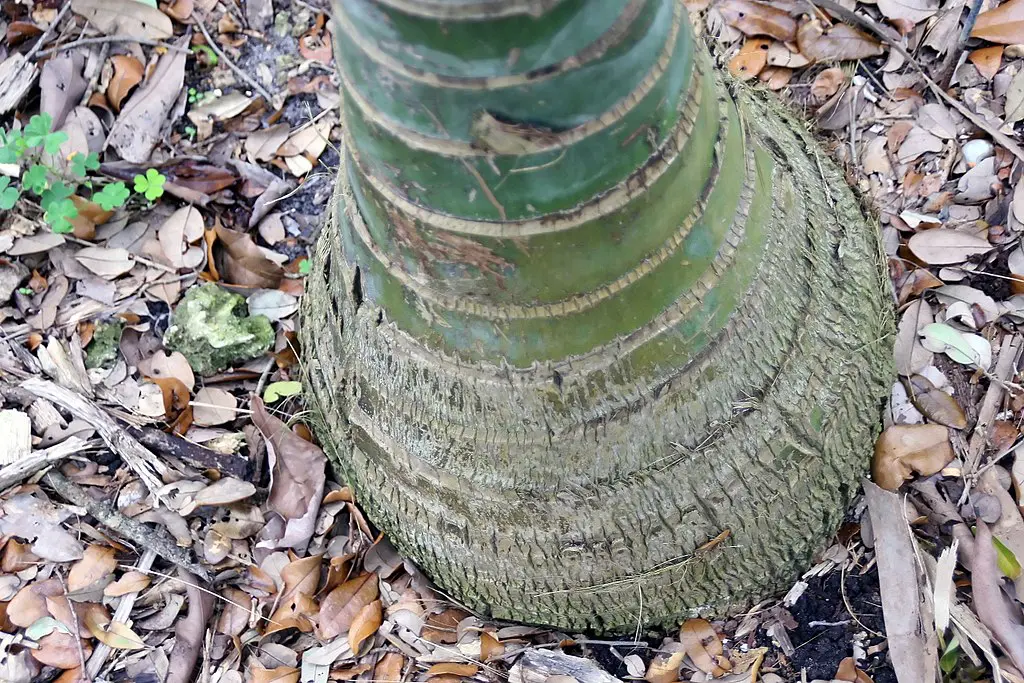
Native Habitat and Popularity as a Houseplant
The Kentia Palm is native to Lord Howe Island, a small island in the South Pacific.
It grows in humid, subtropical conditions and is tolerant of low light levels, making it a great choice for indoor environments.
Its ability to adapt to a wide range of light and temperature conditions, coupled with its slow growth rate and low maintenance needs, has made it a popular houseplant around the world.
Additionally, the Kentia Palm is a hardy plant that is relatively pest-resistant, making it a great choice for beginners or those who may not have the greenest thumbs.
Overall, the Kentia Palm is a great choice for anyone looking to add a touch of tropical elegance to their indoor space.
III. Kentia Palm Light Requirements
Light is an essential component of Kentia Palm indoor care, as it plays a critical role in the plant’s growth and overall health.
In this section, we’ll take a closer look at the light requirements for the Kentia Palm and offer some tips on how to provide your plant with the optimal light conditions to help it thrive.
Understanding the light needs of your Kentia Palm is crucial for keeping it healthy and vibrant.
So let’s dive in and learn more about how to provide the right amount of light for your Kentia Palm.
Ideal Light Requirements for the Kentia Palm
The Kentia Palm thrives in bright, indirect light, but can also tolerate low light conditions.
Ideally, it should be placed near a window that receives bright, filtered light, such as an east-facing window.
This is a good place for it because it will get some morning sun but not too much direct sunlight.
The Kentia Palm can also be grown under artificial lights, such as fluorescent or LED grow lights, which can provide the necessary light for the plant to thrive.
Positioning the Kentia Palm Near Windows and Artificial Lights
When positioning the Kentia Palm near windows, it’s important to avoid direct sunlight, as this can scorch the leaves and cause irreparable damage.
Instead, place the plant a few feet away from the window and use a sheer curtain to filter the light.
When using artificial lights, ensure that they are positioned at the appropriate height above the plant to provide even coverage.
Be careful giving them too much light and use a timer to limit light to no more than 12 hours a day.
Avoiding Overexposure to Direct Sunlight
While the Kentia Palm can tolerate some direct sunlight, it is best to avoid prolonged exposure to the sun’s rays, particularly during the hottest parts of the day.
If the plant is exposed to direct sunlight for too long, the leaves can become scorched and turn yellow or brown.
To avoid this, ensure that the plant is positioned in a spot where it receives bright, indirect light for most of the day, and protect it from direct sunlight with a shade or sheer curtain when necessary.
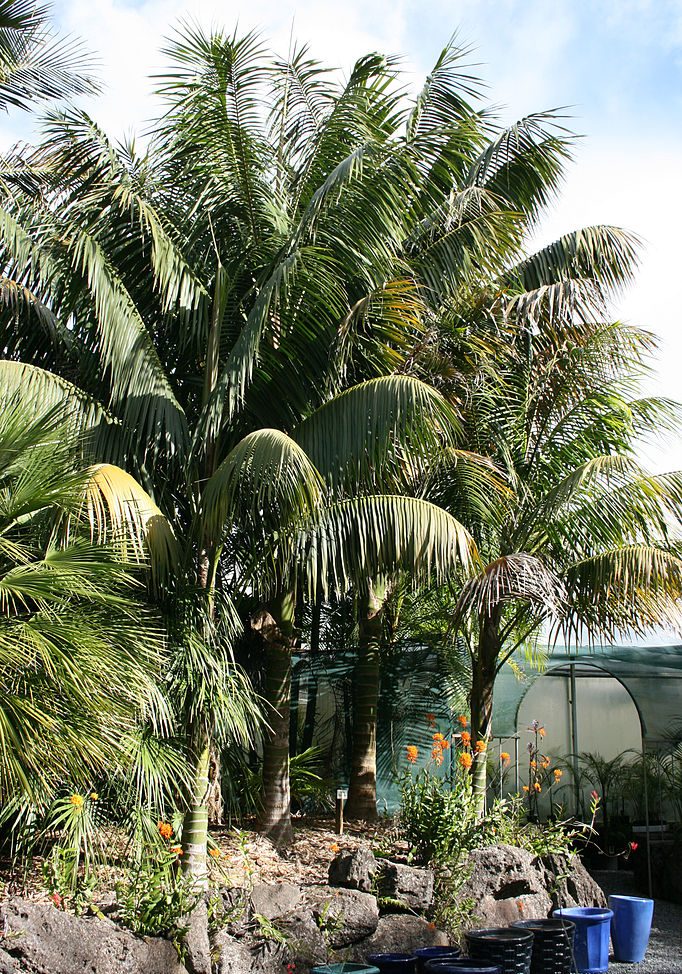
IV. Watering
Watering is a crucial aspect of Kentia Palm indoor care, as proper hydration is essential for the plant’s growth and overall health.
In this section, we’ll take a closer look at the watering needs of the Kentia Palm and offer some tips on how to ensure that your plant is getting the right amount of water.
Understanding the watering requirements of your Kentia Palm is key to keeping it healthy and thriving.
So let’s dive in and learn more about how to water your Kentia Palm properly.
Ideal Watering Schedule for the Kentia Palm
The Kentia Palm requires regular watering to maintain its health and vitality.
A good rule of thumb is to water the plant when the top few inches of soil are dry to the touch.
Depending on the temperature and humidity levels in your home, this could be anywhere from once a week to once every two weeks.
Properly Watering the Kentia Palm
When watering the Kentia Palm, it’s important to use room temperature water, as cold water can shock the plant’s roots.
Slowly pour water into the soil until it begins to drain out of the bottom of the pot. This ensures that the roots are adequately hydrated and that excess water is removed.
Avoiding Overwatering and Underwatering the Kentia Palm
Overwatering and underwatering are common problems that can affect the health of the Kentia Palm.
To avoid overwatering, make sure that new plants are in soil that is well-draining and that excess water can drain out of the pot.
Don’t let the pot sit in a water-filled tray. This could cause root rot. Empty the saucer after watering.
To avoid underwatering, ensure that the soil is moist but not waterlogged and that the plant is receiving enough water to stay hydrated.
It’s also important to note that the Kentia Palm can tolerate periods of slight drought, so it’s better to err on the side of underwatering rather than overwatering.
V. Humidity Requirements
Humidity is an important factor in the care of the Kentia Palm, as it is native to tropical regions with high humidity levels.
In this section, we’ll explore the humidity requirements of the Kentia Palm and offer some tips on how to ensure that your plant is getting the right amount of moisture in the air.
Maintaining proper humidity levels is crucial to the health and growth of the Kentia Palm, and can help to prevent problems such as brown tips on the leaves or yellowing foliage.
So let’s dive in and learn more about how to provide your Kentia Palm with the right level of humidity.
Ideal Humidity Level for the Kentia Palm
The Kentia Palm thrives in a humid environment, ideally between 50% to 70% humidity.
This can be a challenge to achieve in most indoor environments, particularly during the winter months when the air tends to be drier.
However, maintaining adequate humidity levels is crucial to the health of your Kentia Palm.
Increasing Humidity Levels for the Kentia Palm
To increase the humidity levels around your Kentia Palm, there are several options.
One of the easiest and most effective methods is to mist the leaves with room-temperature water using a spray bottle.
This can be done once or twice a day to provide a quick burst of moisture to the plant.
Another option is to use a humidifier in the room where your Kentia Palm is located.
This can help to maintain a consistent level of moisture in the air, which is beneficial not only for your plant but for your own health and comfort as well.
Avoiding Low Humidity Levels for the Kentia Palm
Low humidity levels can cause the leaves of the Kentia Palm to turn brown and crispy, and can also make the plant more susceptible to pests and diseases.
To avoid low humidity levels, make sure to keep your Kentia Palm away from dry air like heat sources such as radiators or air vents, as these can dry out the air.
You can also group your indoor plants together to create a mini indoor jungle, which can help to increase the overall humidity level in the room.
Using pebble trays is another option you can consider to raise the humidity.
VI. Temperature Requirements
Temperature is an important factor in the care of the Kentia Palm, as it is a tropical plant that thrives in warm and humid tropical conditions.
In this section, we’ll explore the temperature requirements of the Kentia Palm and offer some tips on how to ensure that your plant is getting the right amount of warmth and coolness.
Maintaining proper temperature levels is crucial to the health and growth of the Kentia Palm, and can help to prevent problems such as stunted growth or yellowing leaves.
So let’s dive in and learn more about how to provide your Kentia Palm with the right temperature conditions.
Ideal Temperature Range for the Kentia Palm
The Kentia Palm prefers warm and humid conditions, with an ideal temperature range between 60 to 80 degrees Fahrenheit (15 to 27 degrees Celsius).
While the Kentia Palm can tolerate slightly cooler temperatures, it is important to avoid exposing the plant to extremely hot or cold conditions.
Avoiding Extreme Temperatures for the Kentia Palm
The Kentia Palm is sensitive to extreme temperature fluctuations and should be kept away from drafty areas or direct heat sources, such as radiators or air conditioning vents.
Sudden temperature changes can cause the Kentia Palm’s leaves to turn brown or yellow, and can even lead to permanent damage to the plant.
Protecting the Kentia Palm from Cold Drafts
Cold drafts can be especially damaging to the Kentia Palm, causing the plant’s growth to slow down or even stopping it altogether.
To protect your Kentia Palm from cold drafts, make sure to keep it away from windows or doors that may let in cold air.
You can also use a plant stand to elevate the plant off the floor and away from cold drafts.
In addition, it’s a good idea to place the Kentia Palm in a room with a consistent temperature and avoid moving it around too much, which can lead to temperature fluctuations.
You can move an indoor kentia palm outdoors during the summer months but be careful to give it bright light or partial shade at first.
Avoid giving it full sun at first because it is not fully acclimated to the outdoors.
VII. Soil Requirements
The right soil is essential to the healthy growth and well-being of the Kentia Palm. In this section, we’ll explore the soil requirements of the Kentia Palm and offer some tips on how to ensure that your plant is getting the right type of soil.
Good soil provides the necessary nutrients and drainage that the Kentia Palm needs to thrive and can help to prevent problems such as root rot or wilting.
So let’s dive in and learn more about how to provide your Kentia Palm with the ideal soil conditions.
Ideal Soil Type for the Kentia Palm
The Kentia Palm prefers well-draining soil that is rich in organic matter.
While some people say it’s best to use a potting mix that contains a combination of peat moss, perlite, and vermiculite
The peat moss provides moisture retention and aeration, while the perlite and vermiculite provide drainage. But I disagree.
I think a mix of equal parts perlite and coco coir works much better. Coco offers better water retention and faster drainage.
It also won’t compact like peat and it is a renewable resource, unlike sphagnum peat which is mined and destroys wetlands.
Avoiding High Levels of Fertilizer
It’s important to avoid using soil with high levels of fertilizer for the Kentia Palm. While the plant does require some nutrients to grow, too much fertilizer can cause damage to the plant’s roots and leaves.
It’s best to use a balanced fertilizer that is specifically formulated for indoor plants and to use it sparingly according to the instructions on the package.
VIII. Kentia Palm Fertilizer
In addition to proper soil, the Kentia Palm also requires a balanced diet of nutrients to thrive.
Fertilizer is an essential part of caring for your Kentia Palm, as it provides the necessary nutrients that the plant needs to grow and remain healthy.
However, it’s important to use the right type of fertilizer and to apply it in the correct amount and frequency to avoid damaging the plant.
In this section, we’ll discuss the ideal fertilizer for the Kentia Palm, and provide tips on how to use it effectively.
Ideal Fertilizer Type and Schedule for the Kentia Palm
The Kentia Palm requires a balanced fertilizer with equal parts of nitrogen, phosphorus, and potassium that also contains all necessary trace elements.
A slow-release fertilizer is the best option for the Kentia Palm, as it gradually releases nutrients over time and provides consistent nourishment for the plant.
I like using slow-release fertilizer spikes. They take the guesswork out of fertilizing and feed your plant gradually every time you water.
Fertilizing the Kentia Palm every three to four months during the growing season (spring and summer) is recommended using indoor plant food.
Avoid fertilizing the plant during the dormant season (fall and winter), as it will not be actively growing.
I like using slow-release fertilizer spikes like these:
The use of tree spikes will take the guesswork out of fertilizing. Here is what I recommend for  fertilizing your Kentia palm.
fertilizing your Kentia palm.
I recommend using Jobes Organics fertilizer spikes.
They are easy to use and last for 2-3 months.
They are designed for container-grown citrus but also work great for palm trees.
Using 2 spikes for a 12-inch pot or 3 for an 18-inch pot takes the guesswork out of fertilizing.
They provide a 3-5-5 fertilizer blend along with micronutrients and beneficial bacteria.
Avoiding Overfertilizing the Kentia Palm
Overfertilizing the Kentia Palm can lead to root burn and other issues, so it’s important to use the correct amount of fertilizer.
Follow the instructions on the fertilizer package carefully, and avoid adding more fertilizer than is recommended.
To avoid overfertilizing, it’s also a good idea to start with a half-strength fertilizer to see how your plants react to it.
You can always add more next time but adding too much fertilizer is harder to correct.
If you do notice signs of overfertilization, such as brown tips on the leaves or yellowing leaves, you may need to flush the soil with water to remove excess fertilizer.

IX. Repotting
As the Kentia Palm grows, it may outgrow its current pot, and require repotting into a larger container to support its expanding root system.
Repotting is an essential part of Kentia Palm care, as it ensures the plant has enough space to continue growing and thriving.
However, it’s important to repot the plant at the right time and in the right way to avoid causing stress or damage to the plant.
In this section, we’ll discuss when and how to repot your Kentia Palm to ensure its continued health and growth.
Repotting the Kentia Palm
As the Kentia Palm grows, it will eventually outgrow its pot and require repotting. This is usually necessary every two to three years.
To repot the Kentia Palm, select a new pot that is one size larger than the current pot, with good drainage holes at the bottom.
Gently remove the plant from its old pot, loosen any tangled roots, and add fresh soil to the new pot.
Place the plant in the new pot and add more soil, pressing it down firmly to eliminate air pockets.
Repotting Tips
• Choose the right pot: Select a pot that is 2-4 inches larger in diameter than the current pot, with drainage holes at the bottom.
• Prepare the potting mix: Use a well-draining soil mix, such as a combination of peat moss, perlite, and sand.
• Remove the plant from its current pot: Gently loosen the roots and remove the plant from the pot, being careful not to damage the roots.
• Add the new potting mix: Place a layer of fresh soil mix at the bottom of the new pot, and add the plant. Fill in the gaps with more soil mix, leaving some space at the top.
• Water the plant: Water the Kentia Palm thoroughly, ensuring that the soil is evenly moist.
Repotting your Kentia Palm provides several benefits, including fresh soil, increased room for root growth, and improved drainage.
It also helps prevent the plant from becoming root-bound, which can cause stunted growth and poor health.
Following these steps will help ensure your Kentia Palm thrives in its new pot.
X. Propagation
Propagating plants can be a rewarding experience, especially for plant lovers. In this section, we will discuss how to propagate Kentia Palms, a popular houseplant.
Propagation is a great way to create more plants from a single one and can also help you save money. Let’s dive into the world of Kentia Palm propagation.
There are different ways to propagate Kentia Palms, and each method has its advantages and disadvantages. Let’s explore these methods in more detail.
Propagating Kentia Palms by Seed
Propagating Kentia Palms by seed is a common method, but it can be challenging.
Kentia Palm seeds can take up to several months to germinate, and the success rate is not always high.
However, if successful, this method can produce multiple plants that are genetically identical to the parent plant.
To propagate Kentia Palms by seed, the seeds should be collected when they are mature and sown in a container filled with a moist, well-draining soil mix.
Kentia palm seeds are also available online here
Propagating Kentia Palms by Division
Another method to propagate Kentia Palms is by division. This method involves separating the parent plant into two or more smaller plants.
To do this, you should carefully remove the plant from its pot and divide it into sections, using a sharp knife.
Make sure each section has a good root system and a top. Each new plant should be potted in fresh soil and watered thoroughly.
Caring for Young Kentia Palm Plants
Young Kentia Palm plants require proper care to establish a healthy root system and develop strong growth.
It’s crucial to provide them with the right amount of light, water, and nutrients. Avoid overwatering, as this can cause root rot.
Keep the soil moist but not waterlogged. Fertilize the young plants with a balanced fertilizer every 4-6 weeks during the growing season.
With proper care, your young Kentia Palm plants will grow into strong and healthy specimens.
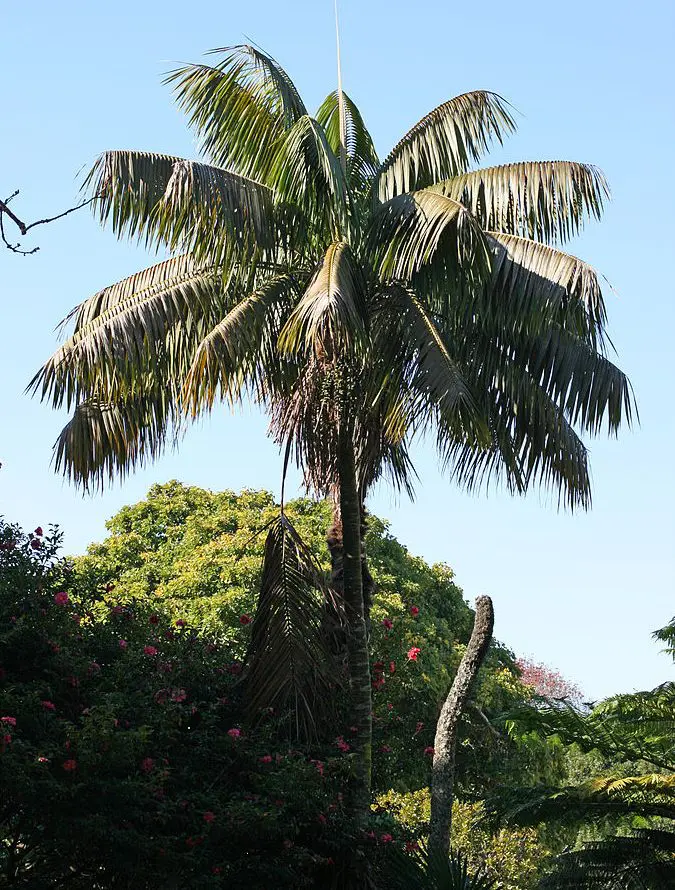
XI. Common Kentia Palm Problems
Despite its reputation as a hardy plant, the Kentia Palm like all indoor palms can experience several problems when grown indoors. In this section, we’ll discuss some of the most common issues that may arise when caring for a Kentia Palm, including pests, diseases, and environmental factors. We’ll also provide solutions and tips to help you address and prevent these problems from occurring.
Here are some common problems that can affect the Kentia Palm and how to address them:
Brown Tips: Brown tips on the Kentia Palm’s leaves can be caused by several factors, such as low humidity, overwatering, or exposure to direct sunlight.
To address this issue, increase the humidity levels around the plant, reduce watering frequency, and move the plant away from direct sunlight.
Yellowing Leaves: Yellowing leaves on the Kentia Palm can be a sign of overwatering, underwatering, or nutrient deficiencies.
To treat this issue, adjust your watering schedule and ensure that the plant is getting enough light and nutrients.
Pests: Common pests that can affect the Kentia Palm include spider mites, mealybugs, and scale insects.
To prevent and treat pest infestations, regularly inspect your plant for signs of pests and treat with an insecticide or neem oil.
By identifying and addressing these common problems, you can help keep your Kentia Palm healthy and thriving.
Examples of insect pests and treatment
Some common insect pests that can affect Kentia Palms include red spider mites, mealy bugs, and scale insects.
The red spider mite is a tiny insect that sucks the sap from the leaves, causing them to turn yellow and dry out.
They are difficult to see with the naked eye, but their presence can be detected by the fine webbing they produce.
To treat spider mites, you can wipe down the leaves with a damp cloth or spray the plant with a solution of water and neem oil.
Mealybugs are small, white, fluffy insects that feed on the sap of the Kentia Palm, causing stunted growth and yellowing leaves.
They are often found in the crevices of the leaves and stems. To treat mealybugs, you can wipe the plant down with a cotton swab dipped in rubbing alcohol, or spray the plant with a solution of water and neem oil.
Scale insects are small, round insects that attach themselves to the leaves and stems of the Kentia Palm, causing them to turn yellow and fall off.
They produce a sticky substance called honeydew, which attracts other pests like ants.
To treat scale insects, you can remove them with a cotton swab dipped in rubbing alcohol, or spray the plant with insecticidal soap.
Kentia Palm Care FAQs
In nurturing a Kentia Palm indoors, a few common queries tend to surface.
By addressing these queries, we empower ourselves with the knowledge to foster a thriving ambiance for our Kentia Palm, enhancing not only the green aesthetic of our indoor spaces but also enjoying the purifying benefits it brings along.
Here are some common questions and answers regarding Kentia Palm indoor care:
Q. How often should I water my Kentia Palm?
A. Water your Kentia Palm when the top few inches of soil feel dry to the touch. The frequency could range from once a week to once every two weeks depending on your indoor conditions.
Q. What is the ideal soil mix for Kentia Palm?
A. A well-draining soil mix, comprising equal parts of perlite and coco coir, is ideal. This mix ensures good water retention, and fast drainage, and doesn’t compact like other soil types.
Q. How much light does a Kentia Palm need?
A. Kentia Palm thrives in bright, indirect light. However, it can also tolerate low light conditions. Avoid exposure to harsh direct sunlight as it can scorch the leaves.
Q. When and how should I repot my Kentia Palm?
A. Repotting every two to three years or when the plant outgrows its current pot is ideal.
Choose a pot that is one size larger, gently remove the plant from the old pot, and place it in the new pot with fresh, well-draining soil, pressing down to eliminate air pockets.
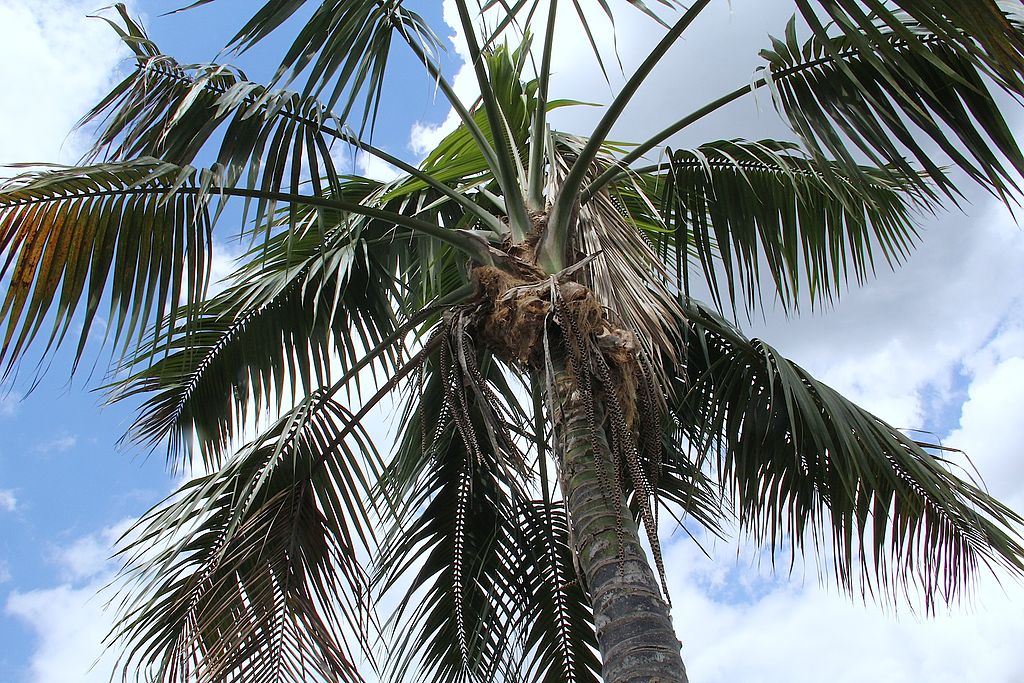
XII. Kentia Palm Indoor Care Final Thoughts
In conclusion, the Kentia Palm is a popular indoor plant that can thrive with proper care.
Some key points to keep in mind include providing the right amount of light and humidity, watering the plant correctly, using the ideal soil type and fertilizer, and protecting it from extreme temperatures and pests.
Additionally, having indoor plants like the Kentia Palm can have numerous benefits, such as purifying the air and improving one’s mood.
By following these Kentia Palm indoor care tips for your Kentia Palm, you can enjoy a beautiful and healthy addition to your indoor space.
Read more: Indoor Palm Tree Care: 11 Powerful Tips Complete Guide For Beginners



